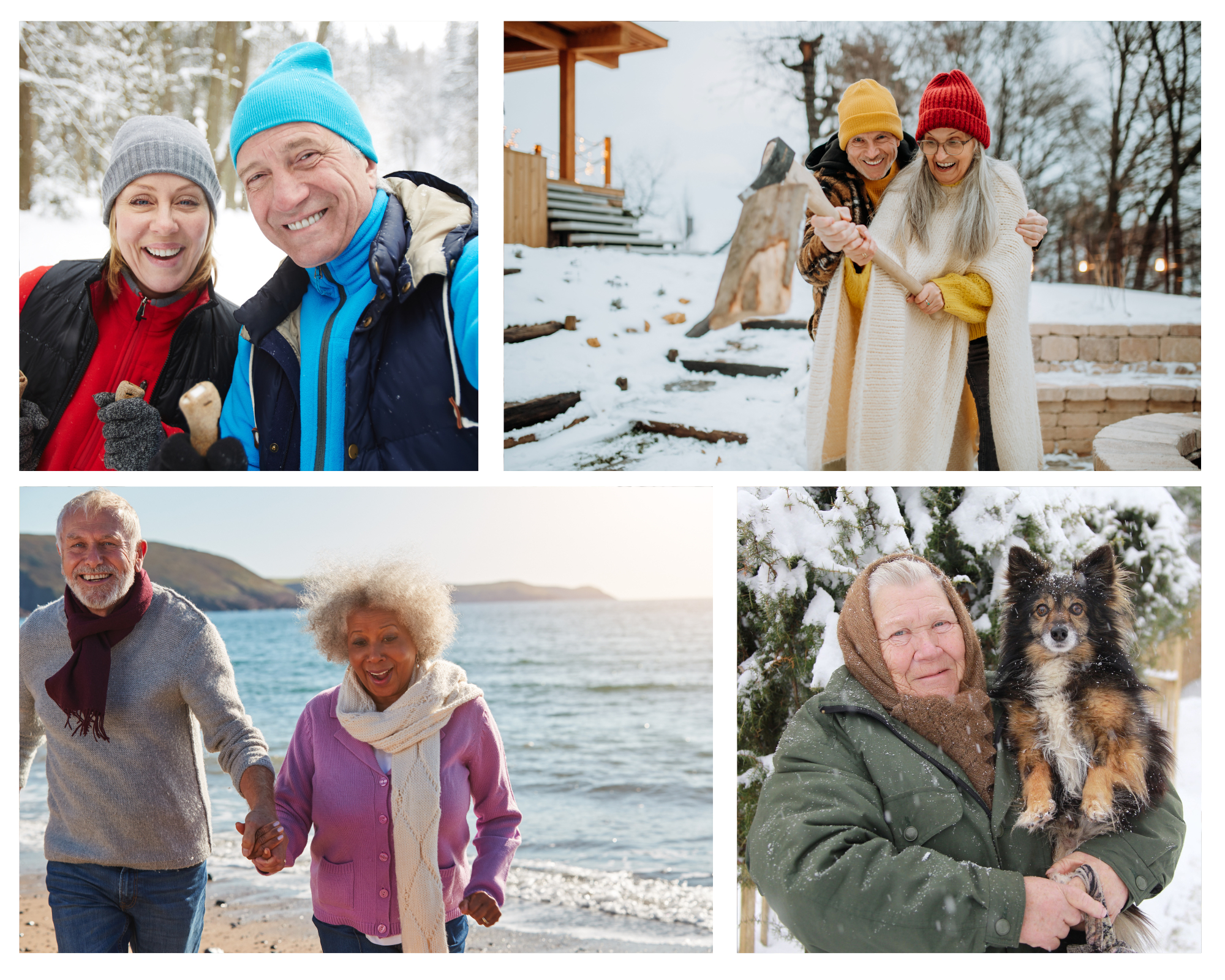
Getting Outside in the Winter
November 30, 2022Once temperatures dip below freezing, many resign themselves to “hibernating” (or really, staying indoors) until the first sign of spring. Winter is a difficult season for everyone, but it is especially hard for older adults. And while curling up under layers of blankets to watch your favorite show may sound ideal, it is not good for your health.
There is a reason doctors are once again prescribing nature walks to treat a variety of conditions. From impacts on moods and circadian rhythms, getting outside in the winter is shown to benefit both your mental and physical health (in spite of the cold).
How does getting outside in the winter impact my health?
Even small amounts of sunlight every day can positively impact your health. Whether that’s a walk around the block or a hike through a forest, you may see these benefits from getting outside.
An increase in vitamin D
Vitamin D is crucial to the absorption of calcium and your overall bone health. For seniors who are more susceptible to breaking their bones, it is important they get their daily dose of the vitamin.
Boosted immune system
Getting outside, even in the winter, has been shown to decrease stress hormones. And while the winter months are notorious for cold and flu season, a brisk walk may help you avoid getting sick, as it flushes bacteria out of your airways.
Improved memory
A study at the University of Michigan tested how one’s scenery can have an impact on the brain’s cognitive function. The study found that those who walked around a visually stimulating location, like an arboretum, had improved memory recall by nearly 20%. Head to your local park or nature preserve to reap the benefits.
Improved mood
Studies show that daylight has a powerful impact on our serotonin levels. Daylight is naturally lower in the winter, and staying locked inside is likely to exacerbate low levels of mood, energy, alertness, and cognitive function. Even a short daily walk will make an impact.
Staying safe outdoors in the winter
Naturally, you can’t just pop outside for a walk in the winter like you would in the summer. To make sure you’re safe as you enjoy the great outdoors, remember these tips.
- Bundle up! Multiple lightweight layers actually keep you warmer than just one, large coat. This is because the layers act as a barrier to the cold and keep you well-insulated. Don’t forget thick socks and a hat, as these extremities are where most of your body heat escapes you.
- Wear shoes with good traction. It’s easy to slip and fall on ice when you don’t have the right shoes. Snow boots are an important investment that will keep you safe as you walk about.
- Recognize the signs of hypothermia. If you begin to experience drowsiness, fatigue, confusion, and disorientation, you may be experiencing hypothermia. Get to a warmer location and seek medical attention as soon as possible.
A home caregiver can help you out this winter
Everything, from caring for yourself or making meals, feels more difficult in the winter. An at-home caregiver can help you with the activities of daily living you require assistance with, such as personal care, medication reminders, and meal preparation.
If you think you might benefit from an at-home caregiver, Home Care Powered by AUAF can help. For more information on our program, call us at 773-274-9262.
Articles:
-
How to Use FaceTime: a Senior’s Guide
March 20th, 2024 -
The Best Organic Cleaning Products for Caregivers
March 19th, 2024 -
Celebrating St. Patrick’s Day with Seniors
March 14th, 2024 -
Intellectual Activities for Seniors to Keep their Brains Stimulated
March 13th, 2024 -
Tips for Communicating with Seniors with Hearing Loss
March 12th, 2024 -
How to Learn a New Language as an Older Adult
March 7th, 2024 -
Foods that Support Bone Health in Seniors
March 6th, 2024 -
A Note to Our Staff for Caregiver Appreciation Day
March 1st, 2024 -
The Importance of a Senior/Caregiver Bond
February 21st, 2024 -
Recreational Sports as Fitness for Seniors
February 27th, 2024 -
Exploring the Wonders of Reminiscence Therapy
February 15th, 2024 -
Staying Educated on Alzheimer’s Disease and Dementia Care
February 14th, 2024
Call Now! 773.274.9262






